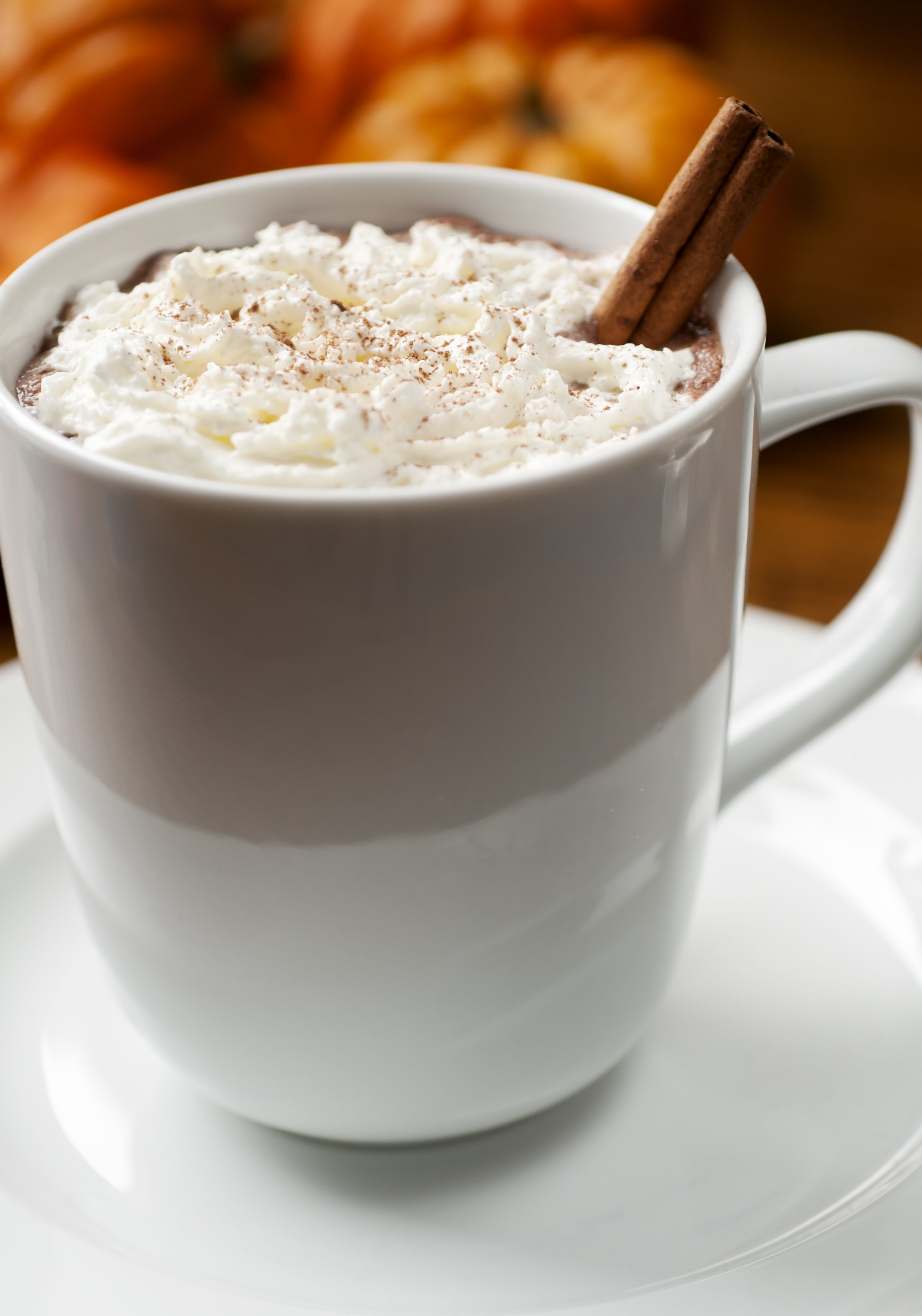
When the clock strikes September, your cup of coffee turns into a pumpkin.
A pumpkin spice latte, that is. There is a difference—an important one, when you consider the recent mini uproar surrounding the “revelation” that Starbucks’ pumpkin spice latte (nationally available since yesterday) doesn’t contain actual pumpkin.
Anyone who’s sipped a PSL, as it’s known on social media, probably could have guessed this. The drink tastes nothing like the earthy squash that is actual pumpkin, and has none of the nutritional benefits, either. Pumpkin, in its whole-food state, is a nutritional bonanza. A cooked, mashed cup of it has 141% of your daily vitamin A and 12% of both your daily potassium and fiber.
Pumpkin spice flavoring, instead, has natural and artificial flavors. What are those, exactly, and why is there no pumpkin?
Kantha Shelke, a food scientist with a background in organic chemistry and spokesperson for the Institute of Food Technologists, gets questions like this all the time. “This conversation about chemicals in food requires a certain amount of responsibility, which I think some of these elitist writers and bloggers and speakers have somehow forgotten,” she says of the backlash against pumpkin spice flavoring. “I think it’s very irresponsible to be ignorant to such a level as to lead others astray and tell them to eat chemical-free food.” After all, she says, water and salt are chemicals.
So is the stuff in your PSL. There’s no pumpkin in it because it’s pumpkin spice, and not pumpkin, that’s the star. The coffee flavorings are designed to resemble cooked pumpkin spice: a blend of nutmeg, cinnamon, ginger, and cloves. It’s supposed to taste like the spicy components of a homemade pumpkin pie, not actual pumpkin.
But DIY’ers, take heed: you can’t just dump a packet of pumpkin spice mix into a mug of espresso and expect it to pass for a PSL. “It would be absolutely awful,” says Shelke. The spice mix you get in the grocery store is specifically formulated to be mixed with butter and eggs and baked. Achieving that flavor of a fresh pie, minus the butter and heat, is no easy task, because pumpkin spice mix contains at least 340 compounds, Shelke estimates. But luckily, all of those aren’t necessary for your taste buds to get the message. “The brain, which is largely responsible for how we identify whether a certain mixture of compounds is a flavor and where the flavor comes from, doesn’t need all the compounds that exist in nature,” Shelke says. Just as your brain doesn’t need vowels to understand a word, certain compounds can fill in the flavor blanks for your brain. Starbucks isn’t soaking your PSL in chemicals, she says—they’re using the minimum number of compounds they need to reach that signature flavor.
These flavor compounds are synthesized in a lab—a process that also occurs outside in nature, Shelke adds–and tested for safety. “But the word synthetic in this country today has become vilified,” she says. “There should not be such a fear of derivatives of molecules and chemicals that are part of nature.”
We need these chemicals, she says, because it’s not sustainable to harvest the enormous amounts of ginger, cinnamon, or cloves needed to match our appetite for pumpkin spice lattes. “I don’t believe there’s enough cinnamon, nutmeg, or ginger if all of India or all of China decided today that they were going to have a pumpkin spice latte,” she says.
If ever there were a sinister side to pumpkin spice lattes, it would be the sugar. One pump of pumpkin sauce contains 8 grams of sugar, Starbucks says, so a grande pumpkin spice latte, with three pumps of syrup, has 24 grams of sugar just from the flavoring, and 49 grams total. (That may be a better reason to avoid the stuff than if you’re bothered by the “natural and artificial flavors.”)
Despite her PR passion for chemicals, Shelke doesn’t drink flavored coffee. But that’s because she’s a bit of a flavor snob; her sense of smell is so good that she can tell which flavors are missing. When I ask Shelke for her review of the pumpkin spice latte, she admits she’s never tried one. “I cannot get past the aroma,” she admits, which to her smells far too rich. “I’m very puritanical in my approach.”
But for the rest of us, including the Pumpkin Spice Latte’s 90,000 Twitter followers, it’s less the actual flavors we taste than the aura that envelops the beverage. “The pumpkin spice aroma combination has more to do with the anticipation and the festive mood it sets you in than the actual taste of the spice mix,” Shelke says. “That’s really all that these beverages are trying to do, to take you back there.” But the only way to get there, she argues, is through chemicals. The humble orange squash just isn’t up for the task.
More Must-Reads From TIME
- The 100 Most Influential People of 2024
- The Revolution of Yulia Navalnaya
- 6 Compliments That Land Every Time
- What's the Deal With the Bitcoin Halving?
- If You're Dating Right Now , You're Brave: Column
- The AI That Could Heal a Divided Internet
- Fallout Is a Brilliant Model for the Future of Video Game Adaptations
- Want Weekly Recs on What to Watch, Read, and More? Sign Up for Worth Your Time
Write to Mandy Oaklander at mandy.oaklander@time.com